Dubai-- city of contrasts, city of extremes
My first impression of Dubai was that this metropolis rising out of the dessert is a land of contrasts that offers a bountiful feast for all the senses. Here, old Arab traditions blend with modern comforts, luxuries, and values. Competing for your attention are—glittering, sanitized, high-tech, modernity juxtaposed with dusty, crowded, chaotic sections of the old town with its souks and multicultural immigrant neighborhoods. Because of its contrasts, it is difficult to position Dubai neatly into any category among world cities. In a sense, it fits into them all but, yet into none. It is truly 2 cities in one.
Dubai, the most popular of the seven United Arab Emirates, is synonymous with over-the-top architecture, booming international trade, and pristine beaches. It is also known for its superlatives: the world’s tallest building, the world’s largest shopping malls, the world’s largest indoor aquarium, the improbable, world’s only indoor ski resort in the dessert (complete with ski lifts, sledding trails, and snow board lanes), the largest port in the Middle East, and the world’s only 7-star hotel. It is also the city with the largest foreign-born population in the world, (roughly 90% of the population).
Until the 1960s, only donkeys and camels provided transport around town. Today, Dubai boasts a modern subway system complete with esthetically pleasing modern subway stations, a broad system of metered taxis, and 3 modern international airports.
Considered by many to be the most multicultural city in the world, its population consists primarily of immigrants and expatriates hailing from all parts of the globe. In Deiraand Bur Dubai (the oldest quarters), signs in shop windows are written in Urdu, Tagalog, Amharic, Malayalam, Tamil, English and Arabic and restaurants feature fare from Syria, Ethiopia, Afghanistan, Iraq, Lebanon, India, Indonesia, Russia, and more. Because such a small percentage of inhabitants are native to the United Arab Emirates, the government provides tax incentives to marry a UAE citizen.
Most of our fellow cruisers headed directly to the glitz and glam of Jumeirah or New Dubai areas replete with beachfront luxury hi-rise hotels, posh restaurants, VIP lounges, boutique shopping, fancy spas, yacht-filled marinas, golf clubs etc. I can experience that at home in Miami.
Instead, we began our visit with a quick taxi ride (Dh38) from the ship to the oldest section of town, Bur Dubai, to the charming Arabian Courtyard Hotel and Spa. This hotel, in the perfect location, is situated directly across from the Dubai Museum, The Grand Mosque, and adjacent to the labyrinth of narrow streets lined with restored houses with wind towers, colorful shops, ethnic eateries, and the second largest gold souk. Bur Dubai is abuzz with energy from early morning till late into the night, with its in stores specializing in bales of fancy Indian fabrics, jewelry stores, sari stores, souvenir shops, electronics, and even designer knock-offs.
Upon arrival at our hotel, we found friendly staff, a welcoming lobby, multiple restaurants, attached shops, and a helpful concierge/tour desk. A quick hotel check-in revealed our room would not be ready until 1 or 2PM. Fortunately, the fabulous Dubai Museum is located directly across the street, in the city’s oldest building dating from 1799.I spent 1.5 hours soaking up the history, heritage, and development of this burgeoning city--learning about Dubai’s transformation from a poor pearling and fishing village to the modern metropolis it has become, all fueled by the 1966 discovery of oil.Most impressive where the life-size dioramas of everyday activities in Old Dubai, complete with souk; a school; a dessert camp; artisan shops; clothing, metalsmithing, and medicine trades; and more.Other exhibits showcased falconry, pearling, fishing, boat making, and archeological finds from the 20thcentury.
Upon arrival at our hotel, we found friendly staff, a welcoming lobby, multiple restaurants, attached shops, and a helpful concierge/tour desk. A quick hotel check-in revealed our room would not be ready until 1 or 2PM. Fortunately, the fabulous Dubai Museum is located directly across the street, in the city’s oldest building dating from 1799.I spent 1.5 hours soaking up the history, heritage, and development of this burgeoning city--learning about Dubai’s transformation from a poor pearling and fishing village to the modern metropolis it has become, all fueled by the 1966 discovery of oil.Most impressive where the life-size dioramas of everyday activities in Old Dubai, complete with souk; a school; a dessert camp; artisan shops; clothing, metalsmithing, and medicine trades; and more.Other exhibits showcased falconry, pearling, fishing, boat making, and archeological finds from the 20thcentury.
 |
| Hotel Lobby |
 |
| Arabian Courtyard Hotel and Spa |
 |
| View from Our Hotel |
As in most parts of Dubai, signage is written in both Arabic and English.

Our hotel check-in proved to be a delight. Not only was our room beautifully decorated with traditional Arabian décor, it was spacious, and immaculate—we had direct views of the 18th century fortress that houses the Dubai Museum and a perfect snapshot of the Grand Mosque’s magnificent minaret. I would stay here again!
Next, we explored the hotel and settled on lunch in a comfortable restaurant featuring a variety of middle eastern, Indian, Southeast Asian, and western dishes. I ordered a delicious Nasi Goreng (my fav Indonesian dish!).
Next, we explored the hotel and settled on lunch in a comfortable restaurant featuring a variety of middle eastern, Indian, Southeast Asian, and western dishes. I ordered a delicious Nasi Goreng (my fav Indonesian dish!).

Our next mission was to make our 4:30 (prepaid online) appointment to climb to the observation deck of Burj Kalifa, the World’s tallest building, a ground-breaking feat of architecture. Upon advice of the doorman, we took what seemed likes trains, planes, and automobiles to reach our destination. Specifically, we took 1) a Taxi to the metro station at the Burjuman Center, 2) We took the modern metro to the Burj Kalifa/Dubai Mall/ stop (just outside this stop was an area that provided great unobstructed views of the 2700 ft. tower), 3) we took the bus to the mall, then, 4) we snaked our way through the world’s largest mall to find the entrance to At-The-Top. It took more than an hour to arrive at the line.
There was excitement in the air in the long lines, passing various multi-media exhibits; we all realized what a unique adventure awaited us. What made this activity even more special was we had purchased tickets to coincide with 530PM sunset. This is the most popular time (and the slot that sells out fastest) daily. We arrived at the top (a one minute rise to the 124th floor observation deck) at 5PM—in time to view day time, sunset, and twinkling lights of night time. What we had not anticipated was the massive bottleneck to descend the tower at such a popular visiting time.
Upon descending, amidst the backdrop of Burj Kalifa, we watched a “performance” of the famous dancing waterfalls of the Dubai Fountain. It is beautifully choreographed to soundtracks collected from around the world.
Next, we spent time visiting the vast Dubai Mall which is a city unto itself, containing 1200+ stores with its wide aisles, open spaces, fashion catwalks, and elegant marble-floored designer emporiums. It even has a Gold Souk, 4-story waterfall, an Olympic sized ice skating rink, an amusement park, the world’s largest aquarium, 160 food outlets, and 2 major grocery stores.
While viewing the aquarium, we observed tourists in wetsuits on a shark dive (with diving instructors). It costs $160 for certified divers and $210 for uncertified divers. Of note, this gargantuan aquarium showcases 33,000 species of aquatic life.
We took a taxi directly back to Bur Dubai, where we strolled the shops before having a late Middle Eastern meal in the hotel restaurant.

The next morning, the first stop was a stroll through the Old Town (Bur Dubai) and through the Bastakia Quarter, over to the creek, amidst shop-lined streets whose windows displayed gold, saris, cloth, clothing, shoes, electronics, sparkling shoes, and other wares closer to the creek. We visited several covered bazaars and strolled through “Hindi Lane”. A highlight of the day was taking a traditional abra ride (wooden water taxi) across the creek to Deira (the 2nd oldest part of town). It was a very scenic ride with wind in our hair and seagulls accompanying us on our 10-minute journey in the sturdy, old, wooden vessel.
Upon disembarkation, the heady scents of cinnamon, cloves, saffron, and other spices, lured us through the charming Spice Souq. We took in the pungent aromas and viewed the wonderfully restored wind towers in this working (vs. tourist) souq. As we strolled through the narrow lanes, we finally reached the famous Gold Souq. I am still in love with the shimmering beauty on display in the 1000+ shops. Of note, gold market value (November 2012) is $56 per gram and gold is typically 22kt and higher.
We ducked in and out of narrow lanes with teashops, busy tailors, barbershops, and cafes and onto the broader lane of Naif South in search of the Afghan Kebab House for lunch. We had to stop several times to ask for directions so we felt a real sense of accomplishment when we finally spotted this restaurant, recommended in my guidebook.
We ordered traditional grilled chicken feasts complete with salad and enormous rounds of oven-baked breads. Dinner was cheap at roughly $3 per person.
Of all my experiences, my encounters here and immediately following lunch were some of the most jarring and antennae-raising.
When I went to the (unisex) restroom before lunch, I noticed there were only men inside. There strong gaze at me was disturbing. I kept my eyes down refusing to establish eye contact. As I returned to my table, it occurred to me that there were no other women present. I returned to the restroom prior to leaving and felt even more uncomfortable, like an outsider. This time I noticed the restaurant was full-the customers were ALL MALE! As we left, we rambled through a maze of streets looking for the nearest Metro stop. I felt as though we had entered an alternate universe. Streets were lined with men and I felt there gaze piercing through my body. It was as though they had never seen the species called woman. I was wearing long sleeved high collared shirt and long pants with enclosed shoes. Nothing had prepared me for this assault in a seemingly open-minded society—especially when we were so close to the heavy tourist areas AND Joel was holding my hand.
If I ever returned there, I would certainly sport a burqua!
Our next adventure was to take the green line to the red line so we could visit the sail-shaped Burj Al Arab (worlds only 7******* hotel and iconic symbol of Dubai), and Ski Dubai inside the Mall of the Emirates.
We viewed and photographed the hotel (built on an artificial island) from the Metro Stop, then, we wound our way through the grand shops in the mall to Ski Dubai. Ski Dubaiis-in a nutshell-impressive! Yes, you can actually ski in the middle of the dessert in this faux winter wonderland with velvety snow and below zero temperatures! From the observation deck, you can view ice sculptures, a sledding hill, 5 ski runs, and a walk-through snow park. Yes, they even supply complete ski-wear, although they require you to bring your own gloves and hats.
We strolled the mall taking in all the impressive merchandising displays then joined the taxi line for a direct return ride to our hotel.
We spent the final hours in Bur Dubai bargaining in souks for souvenirs, packing, and having a final fabulous meal in our hotel.
Unfortunately we had to check out at midnight because we had a 3AM flight home (via London Heathrow).
The final treat was our ride to the airport. We rode in a pink topped vehicle labeled“Ladies Taxi”. Our cheerful driver wore a pink outfit with a “Ladies Taxi” stitched on her hat and dress. (These vehicles areavailable to serve women who feel uncomfortable in vehicles with male drivers). I was happy to tip our pleasant driver extra!
The Dubai international airport was modern and spacious as expected and provided final opportunities to spend our remaining Dirhams.
Here are more Dubai Observations:
Demographic diversity. People from all parts of the globe are represented.
Metro reflects the demographic diversity of Dubai. Everyone’s face looks different from the next
Elegant abaya/abeyya shop s with abayas adorned with jewels, beads, sequins, embroidery, feathers, and intricate Swarovski crystal designs
Abundance of men wearing dishdashas (Long one piece white tunic worn by Arab men) with red and white checked head cloth (gutra) attached by a black rope (gutra). (That is how you can tell the Arabs from the Non-Arabs—i.e. Indians, Pakistani, and Bangladeshi men)
Abundance of women covered from head-to-toe in abayas/abeyyas and shaylas/burqas. On occasion, I was shocked and appalled to see a western female tourist dressed in revealing clothing of shorts, sleeveless tank top, and high heels.
Signs indicating that chewing gum is against the law. (I did it anyway!)
People are friendly, helpful, polite, and never hostile. They go out of their way to help
The Metros are very orderly
The driver-less and fully automated Dubai metro offers three different classes, a standard ’silver’ class section, a women and children only section and also a first-class VIP ‘gold’ section with leather seats.
At meal times, they bring a bottle of water and charge you for it.
Some of the longest traffic lights I have ever experienced!
The city is completely safe! Guidebooks indicate that no sections are off limits. Women, of course, must be cautious and conservatively dressed to avoid harassment, however.
In Bur Dubai and Deira, there are lots of Indian and Pakistani people and shops and restaurants. I saw more sari shops and beautiful textile shops than in India.
So, the question is: Would I return? Most definitely. I truly enjoyed my visit to this city of contrasts where the traditional past is intricately linked with modern day.
 |
| Dubai Airport |
________________________________________________________________
After my 16-day cruise from Barcelona thru the Suez Canal, with stops in Alexandria, Luxor, and Petra, I spent 2 days in our disembarkation port of Dubai, United Arab Emirates. This was my first visit to the UAE.I booked a room at the charming Arabian Courtyard and Spa hotel, in the older district of Bur Dubai, and just across from the Dubai museum.





















































































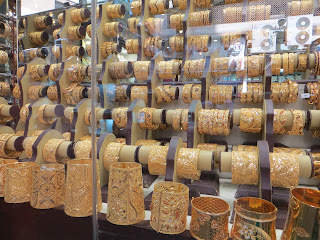















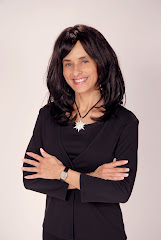

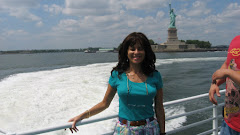


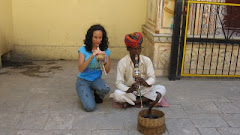
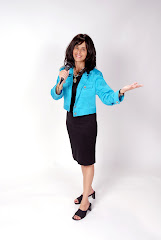.jpg)
.jpg)



